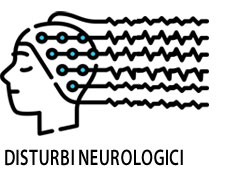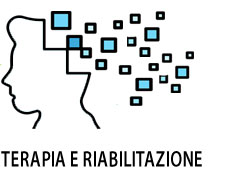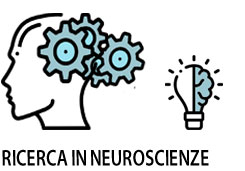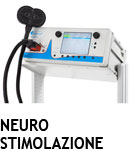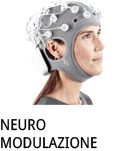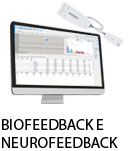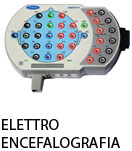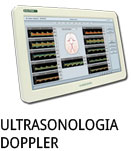- +39 011 5821948
- info@geasoluzioni.it
- Lun - Ven 8:00 - 17:00
Corticospinal excitability is highest at the early rising phase of sensorimotor µ-rhythm
- Abstract:
- Alpha oscillations are thought to reflect alternating cortical states of excitation and inhibition. Studies of perceptual thresholds and evoked potentials have shown the scalp EEG negative phase of the oscillation to correspond to a short-lasting low-threshold and high-excitability state of underlying visual, somatosensory, and primary motor cortex. The negative peak of the oscillation is assumed to correspond to the state of highest excitability based on biophysical considerations and considerable effort has been made to improve the extraction of a predictive signal by individually optimizing EEG montages. Here, we investigate whether it is the negative peak of sensorimotor µ-rhythm that corresponds to the highest corticospinal excitability, and whether this is consistent between individuals. In 52 adult participants, a standard 5-channel surface Laplacian EEG montage was used to extract sensorimotor µ-rhythm during transcranial magnetic stimulation (TMS) of primary motor cortex. Post-hoc trials were sorted from 800 TMS-evoked motor potentials (MEPs) according to the pre-stimulus EEG (estimated instantaneous phase) and MEP amplitude (as an index of corticospinal excitability). Different preprocessing transformations designed to improve the accuracy by which µ-alpha phase predicts excitability were also tested. By fitting a sinusoid to the MEP amplitudes, sorted according to pre-stimulus EEG-phase, we found that excitability was highest during the early rising phase, at a significant delay with respect to the negative peak by on average 45° or 10 ms. The individual phase of highest excitability was consistent across study participants and unaffected by two different EEG-cleaning methods that utilize 64 channels to improve signal quality by compensating for individual noise level and channel covariance. Personalized transformations of the montage did not yield better prediction of excitability from µ-alpha phase. The relationship between instantaneous phase of a brain oscillation and fluctuating cortical excitability appears to be more complex than previously hypothesized. In TMS of motor cortex, a standard surface Laplacian 5-channel EEG montage is effective in extracting a predictive signal and the phase corresponding to the highest excitability appears to be consistent between individuals. This is an encouraging result with respect to the clinical potential of therapeutic personalized brain interventions in the motor system. However, it remains to be investigated, whether similar results can be obtained for other brain areas and brain oscillations targeted with EEG and TMS.
- Patologie/Applicazioni:
- Anno:
- 2022
- Tipo di pubblicazione:
- Articolo
- Parola chiave:
- TMS; MEP; massima eccitabilità
- Testata scientifica:
- NeuroImage
- Nota:
- Gli studi sulle soglie percettive e sui potenziali evocati hanno dimostrato che la fase negativa dell'oscillazione del segnale EEG dello scalpo corrisponde a uno stato di bassa soglia e alta eccitabilità di breve durata della corteccia visiva, somatosensoriale e motoria primaria. Si presume che il picco negativo dell'oscillazione corrisponda allo stato di massima eccitabilità sulla base di considerazioni biofisiche, ma i risultati ottenuti portano a collocare lo stato di massima eccitabilità durante la prima fase ascendente con un ritardo significativo, circa 45° o 10ms, rispetto al picco negativo. Nella TMS della corteccia motoria, un montaggio EEG standard a 5 canali con Laplaciano di superficie è efficace nell'estrarre un segnale predittivo e la fase corrispondente alla massima eccitabilità sembra essere coerente tra gli individui. Si tratta di un risultato incoraggiante per quanto riguarda il potenziale clinico di interventi cerebrali terapeutici personalizzati nel sistema motorio. Tuttavia, resta da indagare se risultati simili possano essere ottenuti per altre aree cerebrali e altre oscillazioni cerebrali. Lo studio è stato condotto con MagPro R30 e coil a raffreddamento a liquido statico MCF-B65.
- DOI:
- https://doi.org/10.1016/j.neuroimage.2022.119805
Hits: 828
La nostra storia
GEA soluzioni si affaccia nel 2013 al mercato della strumentazione medicale di alto livello tecnologico ma la sua storia parte da più lontano, clicca qui per approfondire.
GEA SOLUZIONI SRL
via Spalato 72/A, Torino
Tel.: 011 5821948 / 011 4463853
Fax: 011 0433281
Email: info @ geasoluzioni.it
P. IVA IT11696920013
REA TO1233648

